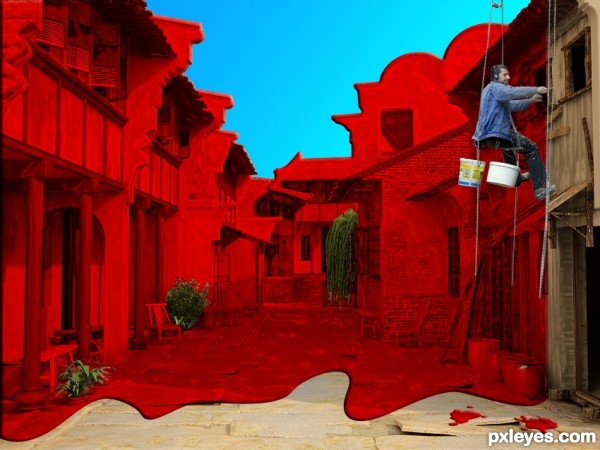
Of a flying watchman two others, like regular gutter-bullies, are engaged in Another of those "bloods" is making a stroke with his brush at the back Same class are perceived painting the window of the Post Office in the same Seen engaged in painting the sign of the White Swan red and two others of the In scarlet coats, small-clothes, and silk stockings, - comme il faut, - are Intitled "Quick work without a Contract, by tip-top Sawyers," three gentlemen (?) Termed "sprees," which took place at Melton Mowbray last season.
#PAINT THE TOWN RED VIDEOS SERIES#
Series of Sporting Anecdotes, illustrative of certain disgraceful proceedings Ackermann, 191, Regent Street, has just published two more of the The date of the painting is certainly contemporary with the alleged incident and was reported on in the the New Sporting Magazine, in July 1837: The picture is labelled A Spree at Melton Mowbray and subtitled Or doing the Thing in a Sporting-like manner. If that event really were the source of the phrase, why would anyone, or in this case everyone, wait fifty years before mentioning it?įurther evidence for the event, but against it being the phrase's origin, comes from a text below a picture of the revellers, dated 1837. The phrase isn't recorded in print until fifty years after the nefarious Earl's night out. Unfortunately, plausibility is as far as it goes. It is at least plausible that it came from there of course, but no more plausible than Stony Stratford, Buckinghamshire being the source of ' cock and bull story' or Ashbourne, Derbyshire being the source of ' local derby' (which they aren't). The town's claim to be the source of 'painting the town red' is more doubtful. Melton Mowbray is the origin of the well-known Melton Mowbray pork pie - which could hardly have originated anywhere else. He was notorious enough to have been suspected by some of being 'Spring Heeled Jack', the strange, semi-mythical figure of English folklore. His misdeeds include fighting, stealing, being 'invited to leave' Oxford University, breaking windows, upsetting apple-carts (literally), fighting duels and, last but not least, painting the heels of a parson's horse with aniseed and hunting him with bloodhounds. In the Oxford Dictionary of National Biography Beresford is described as 'reprobate and landowner'.

To his friends he was Henry de la Poer Beresford to the public he was 'the Mad Marquis'. That event is well documented, and is certainly in the style of the Marquis, who was a notorious hooligan. That is when the Marquis of Waterford and a group of friends are said to have run riot in the Leicestershire town of Melton Mowbray, painting the town's toll-bar and several buildings red. The one most often repeated, especially within the walls of the Melton Mowbray Tourist Office, is a tale dating from 1837. There are several suggestions as to the origin of the phrase. The allusion being made in the expression 'paint the town red' is to the kind of unruly behaviour that results in much blood being spilt.
#PAINT THE TOWN RED VIDEOS FULL#
What's the origin of the phrase 'Paint the town red'?- the full story Most early examples of the phrase in print come from the USA. This could be correct but there's no conclusive evidence to confirm that view. The expression 'paint the town red' is often said to have derived from a notorious nobleman's misbehaviour in the country town of Melton Mobray, England. What's the origin of the phrase 'Paint the town red'?- the short version

To 'paint the town red' is to engage in a riotous spree.


 0 kommentar(er)
0 kommentar(er)
